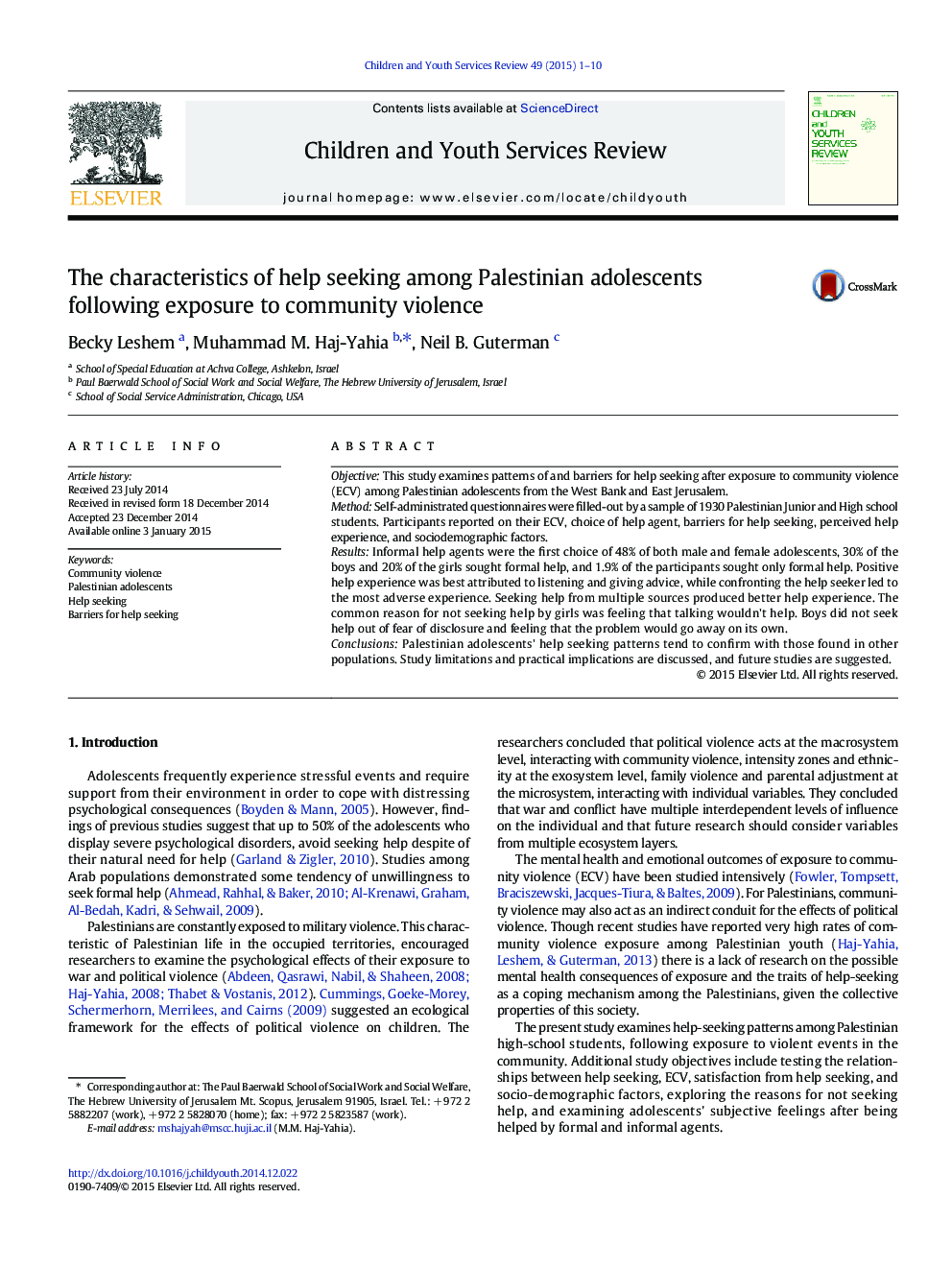| Article ID | Journal | Published Year | Pages | File Type |
|---|---|---|---|---|
| 346018 | Children and Youth Services Review | 2015 | 10 Pages |
•Help seeking behaviors after exposure to community violence were examined among Palestinian junior high and high school students.•Informal agents were the first choice for help of about half of the participants.•Formal help was sought by 30% of the boys and 20% of the girls. 1.9% of the participants sought only formal help.•Positive help experience was best attributed to listening and giving advice and confronting help seekers led to the most adverse experiences.•The common reason for girls not seeking help was the feeling that talking would not help. Boys did not seek help due to fear of disclosure.
ObjectiveThis study examines patterns of and barriers for help seeking after exposure to community violence (ECV) among Palestinian adolescents from the West Bank and East Jerusalem.MethodSelf-administrated questionnaires were filled-out by a sample of 1930 Palestinian Junior and High school students. Participants reported on their ECV, choice of help agent, barriers for help seeking, perceived help experience, and sociodemographic factors.ResultsInformal help agents were the first choice of 48% of both male and female adolescents, 30% of the boys and 20% of the girls sought formal help, and 1.9% of the participants sought only formal help. Positive help experience was best attributed to listening and giving advice, while confronting the help seeker led to the most adverse experience. Seeking help from multiple sources produced better help experience. The common reason for not seeking help by girls was feeling that talking wouldn't help. Boys did not seek help out of fear of disclosure and feeling that the problem would go away on its own.ConclusionsPalestinian adolescents' help seeking patterns tend to confirm with those found in other populations. Study limitations and practical implications are discussed, and future studies are suggested.
